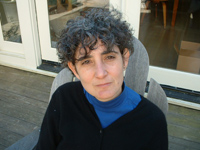|

The Aesthetics of Molecular Forms
Molecules are intrinsically unseeable; as a result it has been necessary for scientists, since the late nineteenth century, to use a common, imaginative set of forms to represent their properties. One might think that such structures are simply heuristical, but upon study it becomes apparent that they actually constitute the science they underwrite, embedding molecular study with an muted aesthetics that delights and motivates scientists. As chemistry has evolved and been rebranded as nanoscience, scientists have had the opportunity to envision molecular forms again through the lens of scanning probe microscopy (SPM). Unlike the valence forms familiar now for over a century, SPM images give molecules the gloss of photographic validity; nevertheless, from buckminsterfullerene to molecular machines, scientists “discover” that SPM generated images validate and reiterate the familiar valence forms spawned in the late nineteenth century and envisioned for so many decades. In this talk I examine the evolution of molecular aesthetics from the first representations of buckminsterfullerene forward, including the aesthetics of molecular machines and scanning probe microscopy. I will highlight buckminsterfullerene's Platonic aesthetics, the aesthetic relationship of nanocars and molecular switches to Boyle's seventeenth-century mechanistic philosophy and twentieth-century machine aesthetics, and the photographic aesthetics of SPM.
Biographie
Tami Spector is a Professor of Organic Chemistry at the University of San Francisco. She received her B.A. from Bard College in 1982, her Ph.D. from Dartmouth College in 1987, and was a post-doctoral researcher at the University of Minnesota from 1987 to 1989. Trained as a physical organic chemist, her scientific work has focused on fluorocarbons, strained ring organics, and the molecular dynamics and free energy calculations of biomolecules. She also has a strong interest in aesthetics and chemistry and has published and presented work on The Molecular Aesthetics of Disease and the Relationship between Chemistry and Contemporary Visual Art. She is on the board of Leonardo/ISAST, co-hosts the San Francisco based Leonardo Arts Sciences Evening Rendezvous' (LASERs), and serves as the co-editor of an on-going special section on Art, Nanoscience and Nanotechnology for the journal Leonardo.
|

